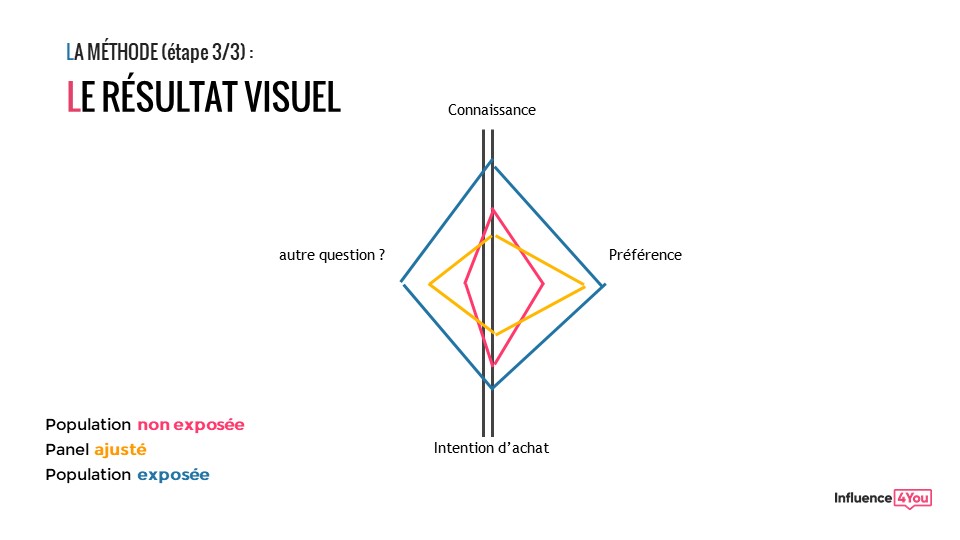Hello,
I’m Stephane, the CEO of Influence4You. Today I am going to show you how to really measure the impact of your influence marketing campaign.
As for myself, you may be asking yourself what the reach and engagement rate really means. The answer is, not a lot. They are necessary, as these are the base indicators of an influence campaign, but they are not extensive enough.
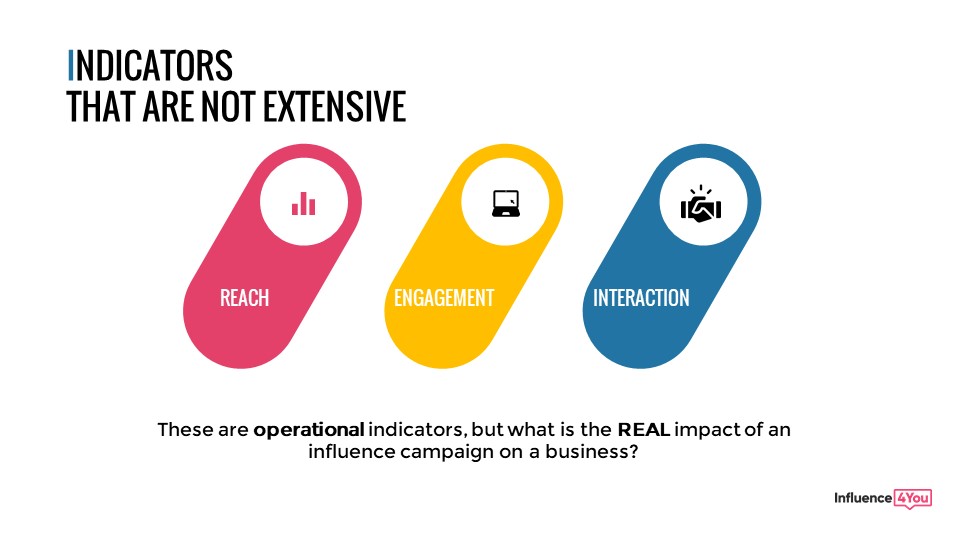
What is really interesting and important is to have TRUE BUSINESS INDICATORS. How has my influence campaign really CHANGED THE BEHAVIOR of the target audience?
Or in other terms, how do I really measure the COST OF ACQUISITION via influence marketing and compare it to other communication channels?
We are going to address these two questions and explain how to easily measure them.
A FEW WORDS BEFORE STARTING
A marketing director or general director of a manufacturing company is not going to look at the same performance indicators as that of an e-commerce company or a mobile app developer.
As the director of Lancome or Mikado, you want to see how your influence campaign has changed the consumer’s behavior (knowledge of the product, brand preference, intention of buying).
As the owner of Uber or Veepee, you want to know what the cost of acquisition is (leads, downloads, purchases) for your influence campaign.
The TRUE indicators for manufacturing brands
To measure the performance of an influence campaign for a manufacturer can be done in two ways:
- The most simple and free (but perhaps less interesting in my opinion): The Earned Media Value.
This is how we measure the media value of your campaign via indicators provided by independent study institutes. So we take the value of a view, like, a comment compared to the buying of classic media, to get the real estimated value of the campaign. This is a very ‘PR’ approach. Here is our free tool to calculate the EMV of your social posts.
If the EMV is greater than the cost of your campaign, you have saved money on buying media… but this does not really measure the impact of the campaign.
- The best and most scientific: INFLUENCE IMPACT
This is the qualitative test. It is a mini-study composed of X amount of questions that compare the brand with its 4 direct competitor brands. This is the method:
The influencer directs his/her community to a competition page ‘X questions to win XX’. The questions are the following:
-
Knowledge: Do you know the brands (M1, M2, M3, M4, M5) (Y/N for each)
-
Preference: Which of these brands do you prefer
-
Purchasing: Would you buy from one of these brands in the next 6 months
-
Other question
-
What is your gender?
-
What is your age?
We keep exactly the same questionnaire and send it to another ‘neutral’ panel of people (people who have not been exposed to the influencer’s message directing them to this page), to have around 500 responses.
We then study this neutral panel and we only keep the responses of those with the same socio-demographic profile as the influencer’s audience, this creates the ‘adjusted panel’.
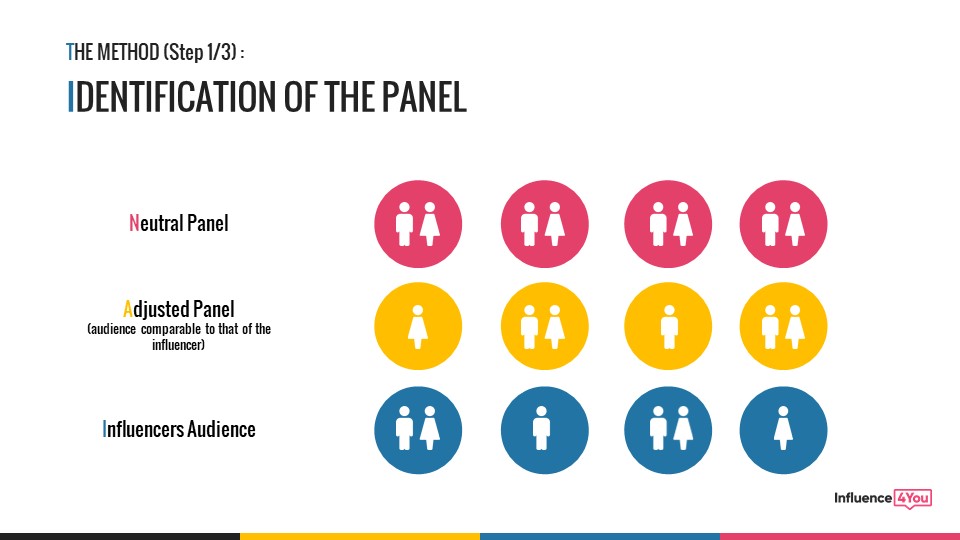
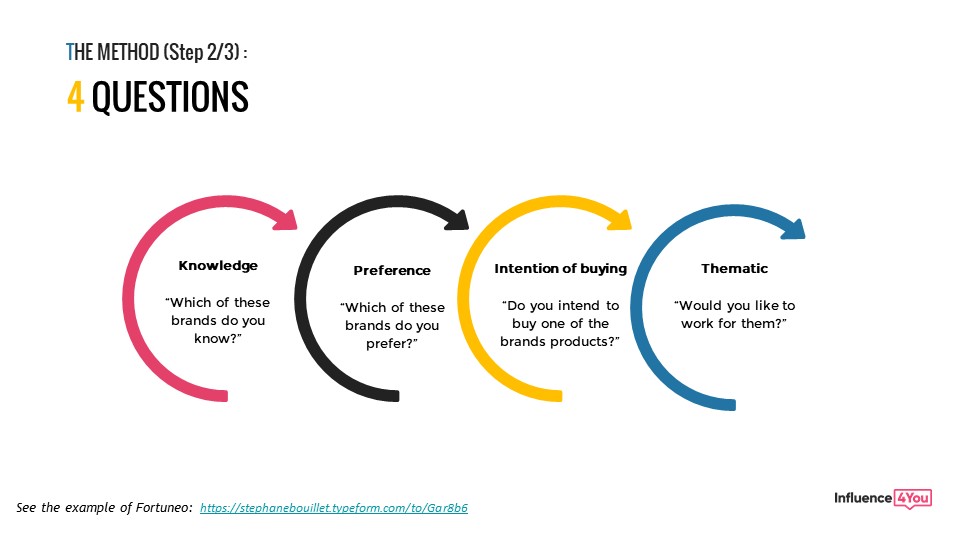
We compare the results of the influencer’s community with that of the neutral panel and adjusted the panel to measure the impact. The impact of the campaign is the % gain on the indicators « knowledge, preference, purchasing, other ».
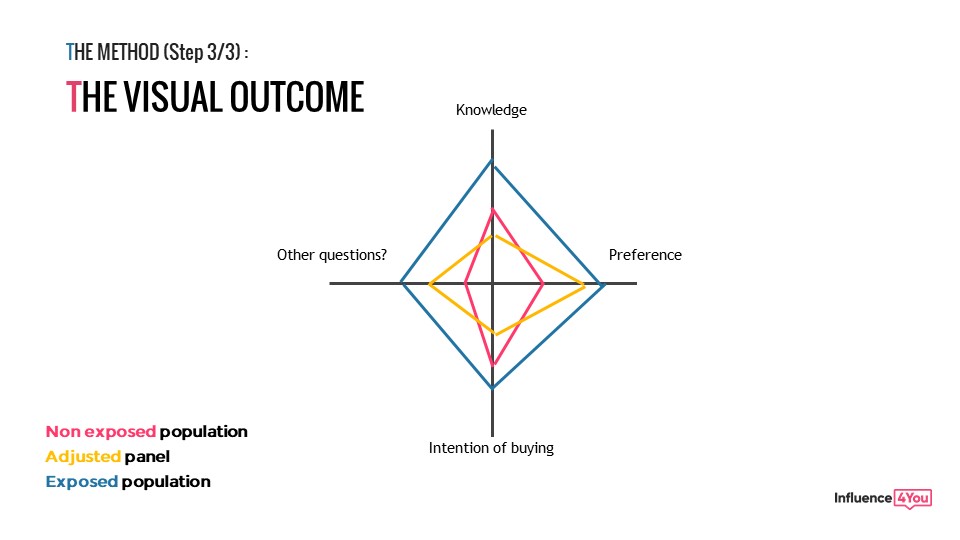
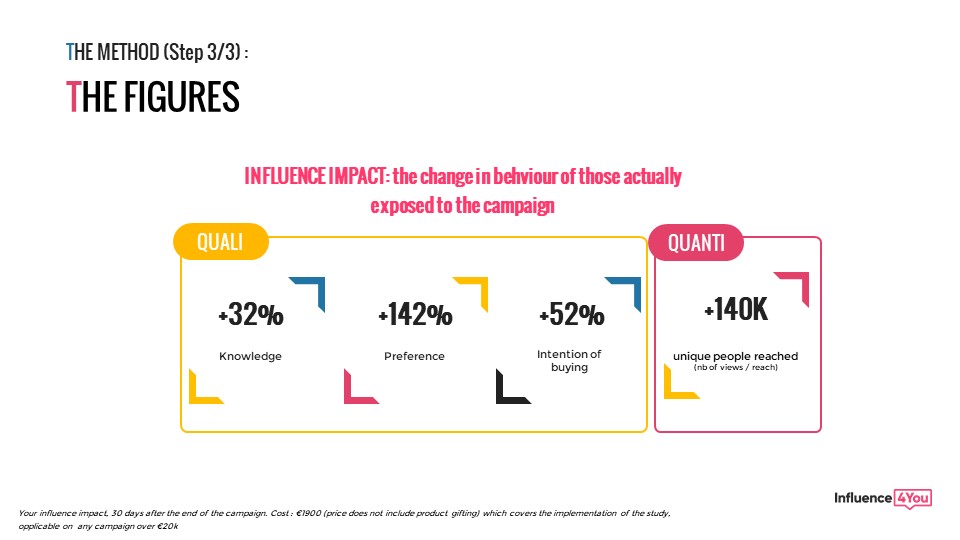
This qualitative test allows you to measure the real impact of your influence campaign on the consumer’s behavior.
But for e-commerce retailers, we can go even further!
The TRUE indicators of E-COMMERCE / PERFORMANCE ORIENTED BRANDS
What really matters for you is the cost of acquisition. Is this cost more interesting for my business and advantageous than other channels of acquisition?
If you take the formula [influence cost] / [number of clients, leads, or visits], and compare it to Google Ads or to affiliation, you risk often being disappointed, as this formula is basic and does not reflect reality.
If you do this, you run the risk of wrongly banking too much on affiliation, because influence marketing is not just about bringing in traffic, it’s a lot more than that.
Therefore, to correctly calculate your cost of acquisition with influence marketing, you need to first of all totally understand what influence marketing is.
Influence marketing is AT THE SAME TIME:
- Content creation
- Notoriety development of the brand
- Trafic driving (tracked and non tracked)
So if you invest 100 in influence marketing, you need to understand that you are also creating brand notoriety and content, not just the generation of traffic.
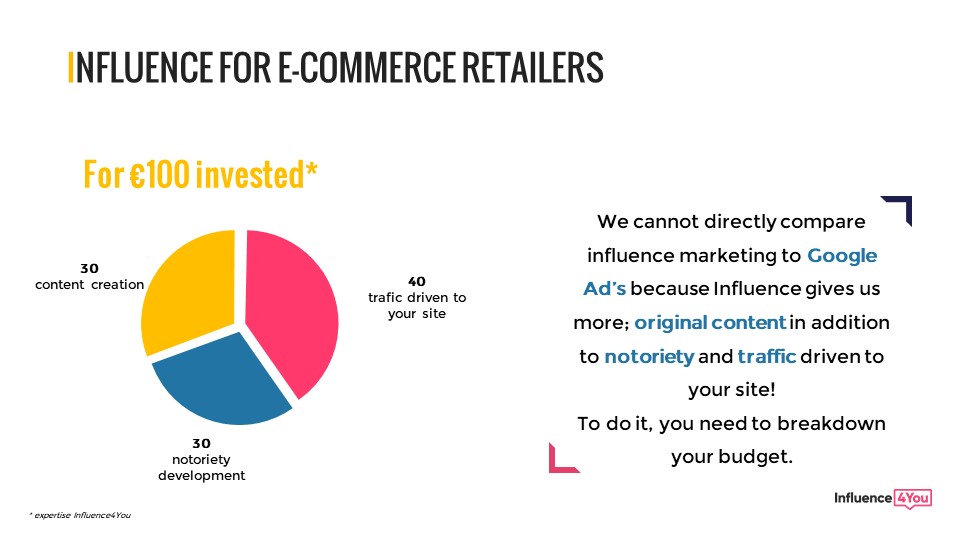
So you can just as well compare the CPM (cost for 1000 contacts) with TV, as you can also compare tracked traffic from influence marketing with tracked traffic via SEM (buying of keywords on Google Ads).
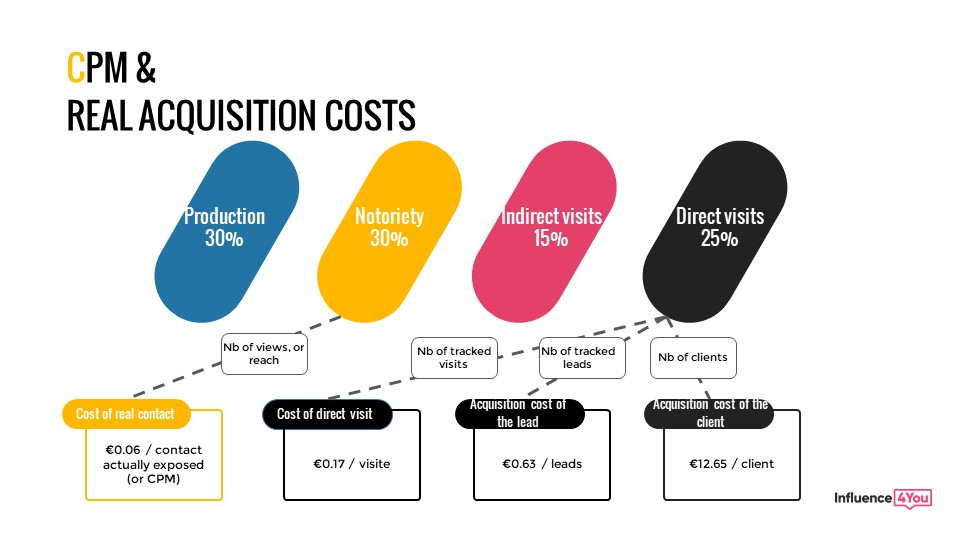
So to calculate the TRUE client acquisition cost, you must (according to our analysis of several campaigns), take between 25 and 30% of your influence budget. The response is therefore the following:
If [influence budget * 25%]/nb of clients < [SEM budget]/nb of clients, influence has a more interesting acquisition cost than SEM!
As influence also develops the notoriety of your brand and creates content for you, don’t be shy! It’s a media equivalent that is useful and also generates sales.
If you are looking to launch your next influence campaign and REALLY measure the results, head here: https://www.influence4you.com
Find these slides on SlideShare here
